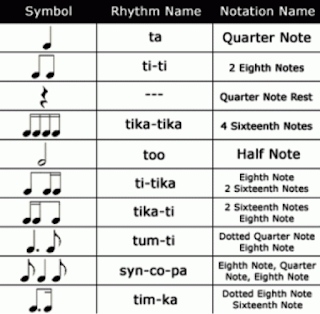Types of Musical Theater
Categories of Musical
Theater Songs
Most
people think that Musical Theater is a genre in its own right but to those
involved in Musical Theater, they realize this field is diverse and
comprehensive. When someone wants to
audition for a show, he or she needs to choose a song that is a similar type, a
comparable vocal style. Below, we first
look at the NINE TYPES OF MUSICALS.
Check out my next blog for the TWENTY-ONE categories of MUSICAL THEATER
SONGS you need to have in your AUDITION BOOK to successfully audition for
Musical Theater productions.
NINE TYPES
OF MUSICALS:
1.
Opera – This was the original “All Music” theatrical
production. The story is told completely
through music with any other components having a secondary focus. There is no speaking whatsoever; everything
is sung. Examples of an Opera are “La
Traviata” by Guiseppe Verdi, “La Boheme”, and “The Barber of Seville”, and “Die
Walkure”.
2.
Operetta – This form shares some elements with
that of the Opera, though Operettas are most usually shorter and treat subjects,
which are of less consequence and weight.
Operettas contain speech, as well as singing and dancing, unlike opera. An example of an Operetta would be Benjamin
Britten’s “Paul Bunyan” or Gilbert and Sullivan’s “The Pirates of Penzance.”
3.
Legit Musical – The Legit Musical is a perfect bridge
between the Opera/Operetta and the Traditional Musical. Featuring classical voices, training, and
styles, these shows are filled with all the control, legato, vibrato, and
highly articulated diction of their classical predecessors but with more
contemporary and idealistic plots. Examples
of the Legit Musical include “A Gentleman’s Guide to Love and Murder”, “Grey
Gardens”, as well as classic, “Golden Age” musicals, such as “Carousel”, “Kiss
Me Kate”, “Showboat”, and “The Sound of Music”.
4.
Book Musical – The Book Musical is a traditional
format that incorporates music, lyrics, dance, and dialog into one story. It uses these elements to establish each
character’s personality, attitudes, and actions. These musicals usually are performed in two
acts with the first being longer than the final act. Examples of the Book Musical are “Man of La
Mancha”, “Les Miserables”, “Oklahoma”, and “Wicked”, and “Gypsy”.
5.
Revue – These musicals usually have a theme but they don’t necessarily
have a specific plot. They are a
compilation of music, dance, and short skits.
Around a general theme, the songs may seem otherwise, completely
un-related. Revues are often produced
for smaller settings, such as supper clubs or even local community centers. Some examples of the Revue are “Jacque Brel
is Alive and Well and Living in Paris”, “Red, Hot, and Cole”, “Side by Side by
Sondheim”, and “Sophisticated Lady”.
6.
Concept Musical – Honestly, at first I didn’t understand
this; I didn’t see how these musicals were significantly different from “Book
Musicals.” I will try to explain those
differences, so each of you is able to understand the distinctions. With these musicals, there is one important
and central “concept” or idea that “speaks” more loudly than even the plot of
the show. These “concepts” are often spiritual,
political, or community-related concern, as opposed to story-driven plots built
around the characters changing intentions and actions. Examples of the Concept Musical are “Fiddler
on the Roof”, “Cats”, “Evita”, “A Chorus Line”, and “Cabaret.”
7.
Jukebox or Karaoke Musical – These musicals are based on work done
by a single artist, band or group of people.
Examples of this genre are “Ain’t Misbehavin’” from the music of Fats
Waller, Abba’s “Mamma Mia”, and more recently, “Come Fly Away”, based on the
music of Frank Sinatra, “Jersey Boys”, featuring the music of Frankie Valli and
the Four Seasons, and “Beautiful: The Music of Carole King”. These musicals used to be pretty rare. They began in the 1970s but with the great
success of musicals like “Mamma Mia”, the number of Jukebox Musicals quickly
escalated. Since 2010, approximately
twenty Jukebox Musicals have opened, making this a very popular genre indeed.
8.
Rock or Pop Musical – The Rock or Pop Musical is a
contemporary addition to Musical Theater; it is an extension of the Jukebox or
Karaoke Musical. These musicals differ
from other genres in that they are ABOUT an artist, a rock star, a pop singer,
or a movie star. Unlike a “typical”
musical, the Rock or Pop Musical uses instruments typical of a rock band, such
as a guitar, keyboard/synthesizer, and drum set, as well as additional
electronic instruments. The music could
be rock, pop, country, hip hop, rhythm and blues, or whatever style the
original music is in. It may contain
guttural noises, screams, manipulation of vowels, howls, breathy tones, or any
additional sounds appropriate to the original music. Examples of the Pop or Rock Musical include “Hair”,
“Jesus Christ Superstar”, “Starlight Express”, “Rent”, “Rock of Ages”, and “School
of Rock”. There are also Rock Operas,
which, like classical Operas, contain only singing. Examples of this genre are “Repo! The Genetic Opera”, “Tommy” by The Who, and “The
Rise and Fall Of Ziggy Stardust And The Spider From Mars” by David Bowie.
9.
Film to Stage Musical – Once again a fairly new musical genre,
these shows began as famous movies.
Sometimes movie songs are included in the musical version by the same
name but this is not always the case. When
“Sister Act” became a Broadway musical, the music was essentially completely
re-written. Examples of this genre are “An
American in Paris”, “Newsies”, “Once”, and “Kinky Boots”.
It is really
important to familiarize yourself with all of these genres when approaching
work, especially on a professional level, in musical theater. This knowledge will then make it easier to
prepare for auditions, choosing appropriate audition songs, and even preparing
for a particular role. Don’t forget to
comment or post questions below. Please
feel free to check out my website at www.SingitForward.net
and check out all my other blog posts.
Thanks! Sing it Forward!


Comments
Post a Comment